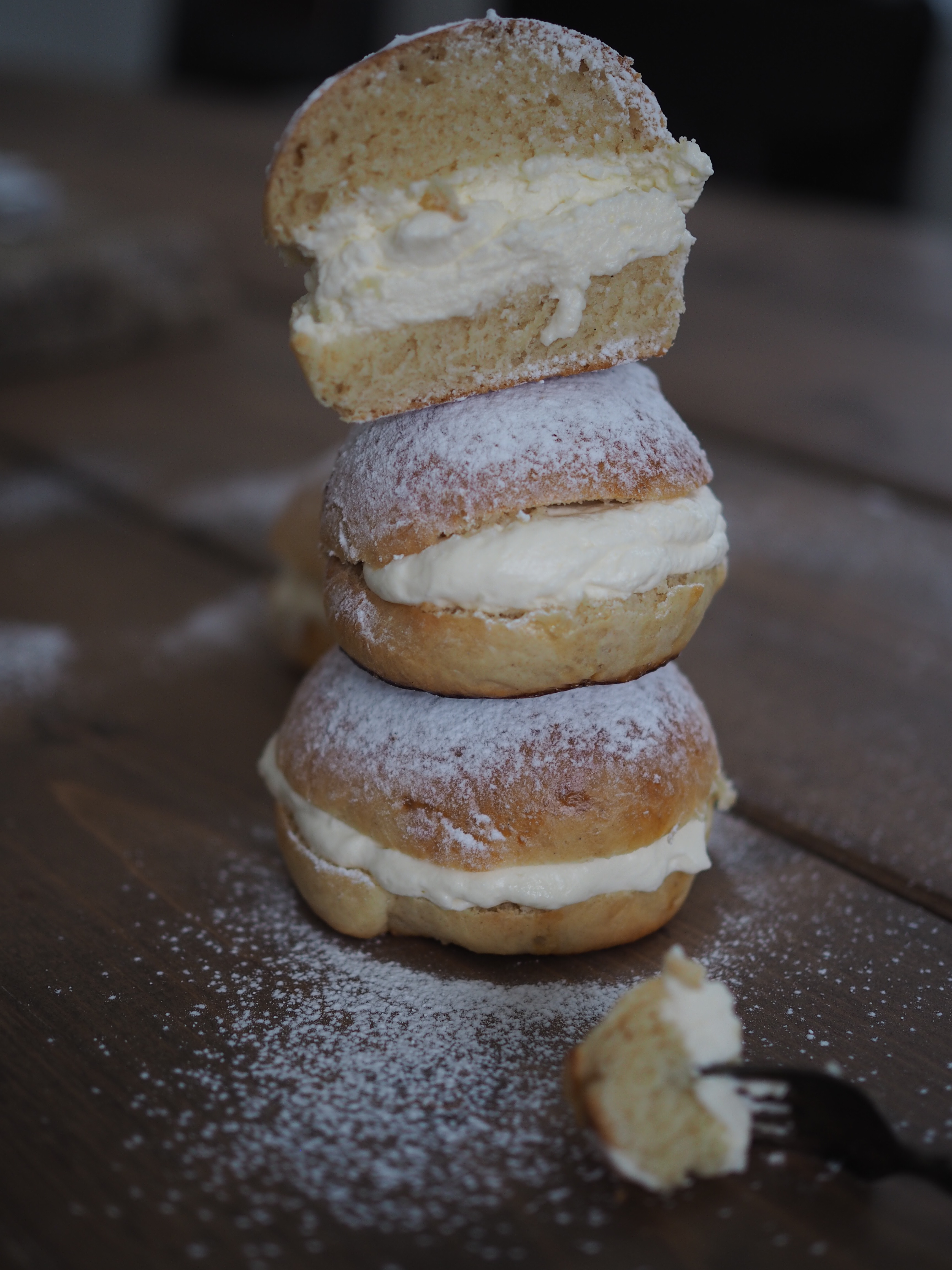
Fastelavn. Shrovetide. Carnaval.
Seven weeks before Easter, and sitting at the cusp of Lent, is a celebration spanning the centuries, and evolving to what is known today in Norway as Fastelavn, or ‘the fast evening’. Three days encompass the fastelavnsfeiring celebrations, starting on Fastelavnssøndag (Sunday), followed with Blåmandag(Blue Monday) or Fleskemandag and concluding with Feitetirsdag (Fat Tuesday) or Hvitetirsdag (White Tuesday).
The roots of Fastelavn tie into the fertility cult. When those with life – women, animals & trees – would be awakened to fertility by being struck with the branches of birch trees. This practice is known as Fastelavnris. Birch trees often had buds at this time of year, and those twigs were referred to as life twigs. It was believed that those branches which did not bear buds at this time, had the fertility effect in itself, and were regarded with even more favor. The blossoming buds were also used for crop and weather predictions. Later, with the associations of Christianity, the twigs were regarding as symbols of the Passion of Christ and as the beginning of Lent.
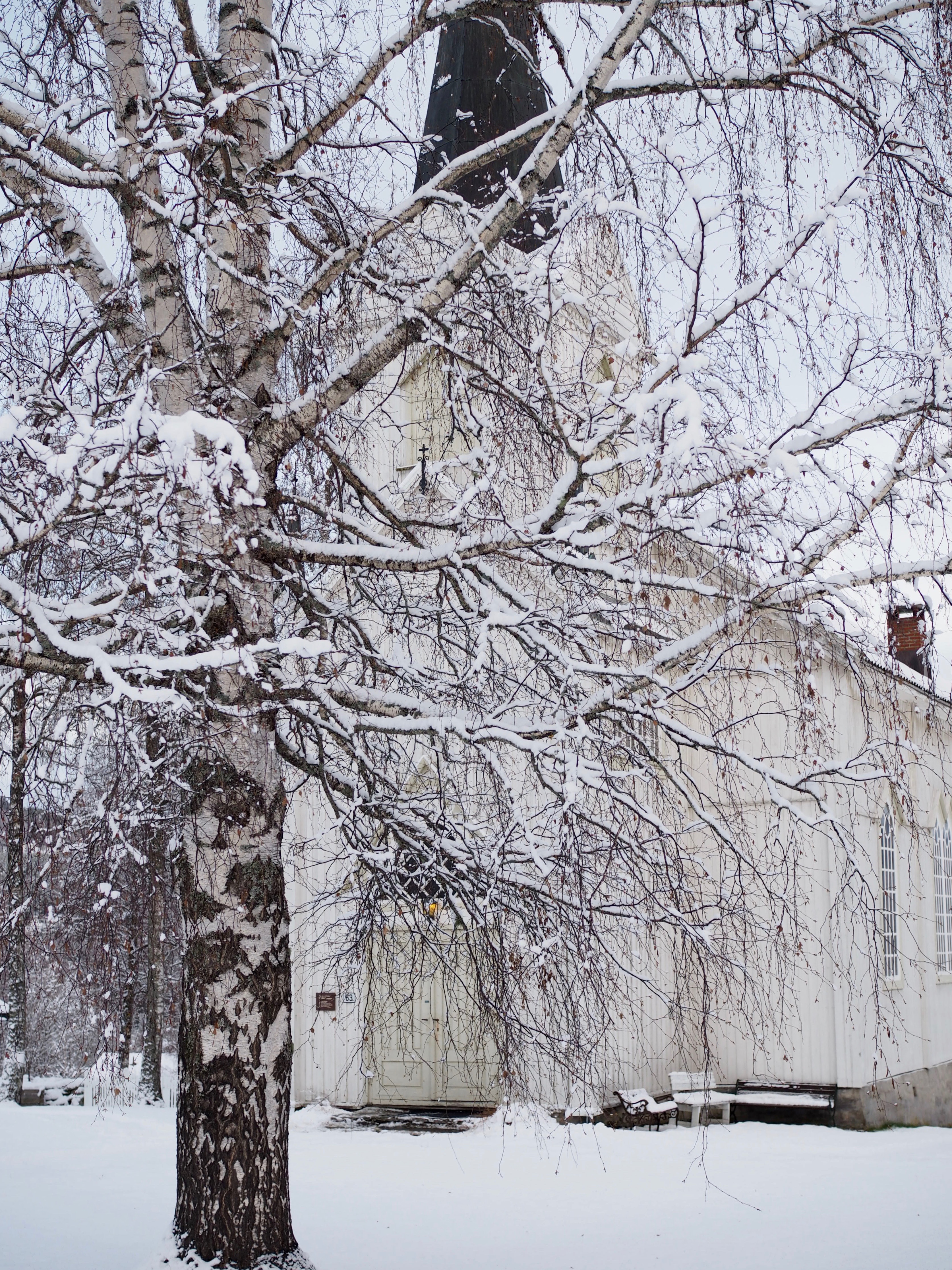 The concept of awakening later turned into an old tradition of waking early from bed and grabbing birch branches to then playfully spank those who were not yet awake. It was normal, up until far into the late 1900s, for children to whip their parents for fun and to be treated to a cream-filled bun afterwards. These buns are still eaten on Sunday.
The concept of awakening later turned into an old tradition of waking early from bed and grabbing birch branches to then playfully spank those who were not yet awake. It was normal, up until far into the late 1900s, for children to whip their parents for fun and to be treated to a cream-filled bun afterwards. These buns are still eaten on Sunday.
The star of Fastelavn: a bun. A boller, to be exact. Freshly baked. Sweetened cream nestled inside. Topped with a generous dousing of powered sugar – just enough to crown the lips of the one lucky enough to take a bite. These are decadent, yet simple. Sometimes, a spreading of jam will grace its interior as well, or custard, but traditionally, the cream should suffice. It’s possible these buns originated from the dumplings which previously were eaten with fatty soup and meat on Sunday as a practice of gluttony.
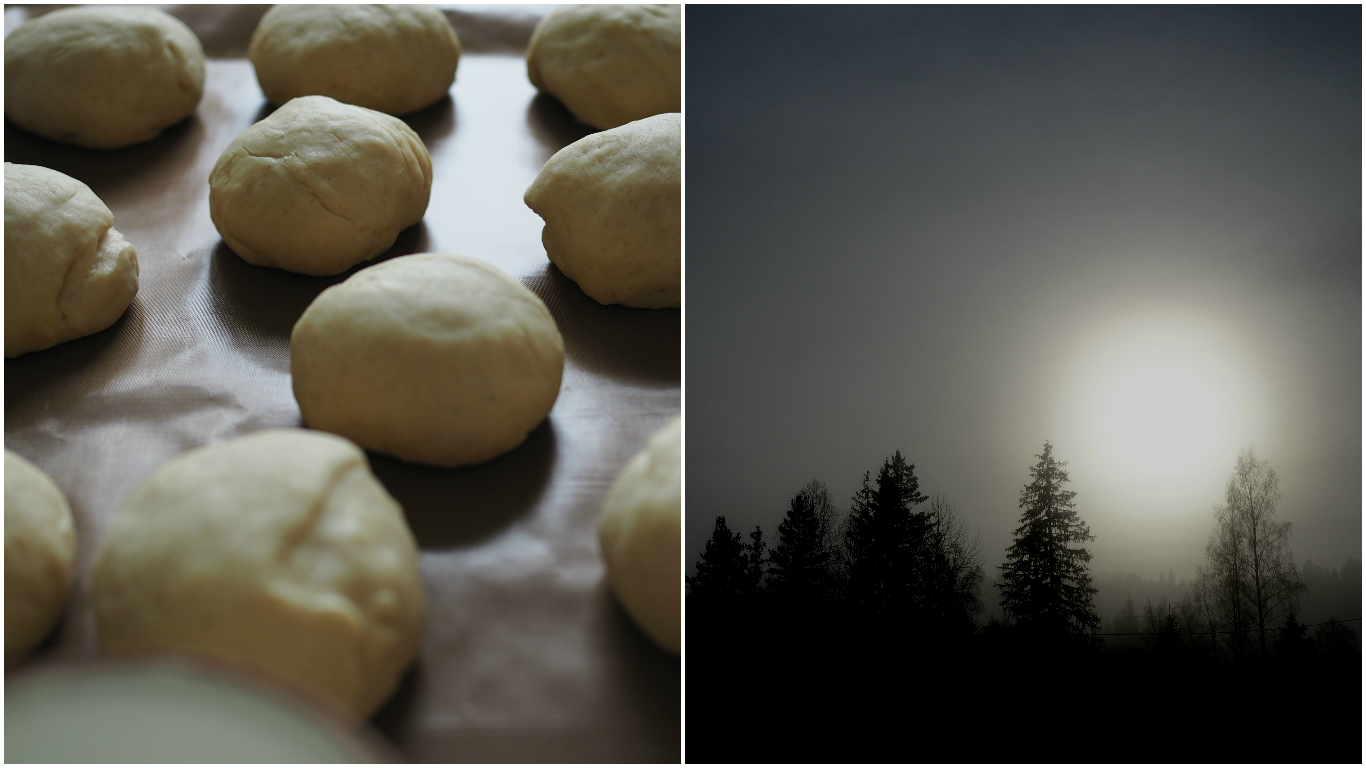
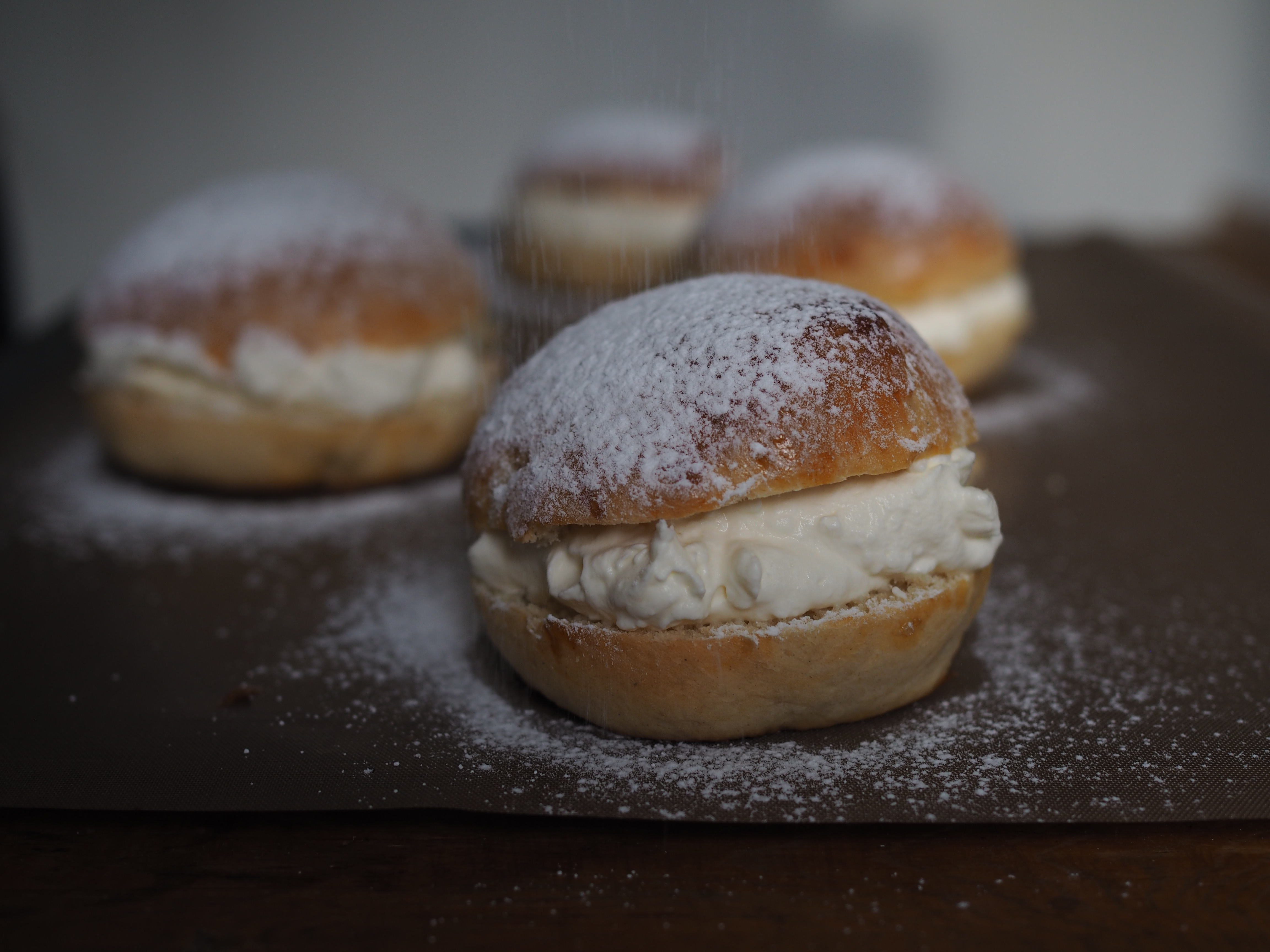
Historically, the three day Fastelavn celebrations were:
Fastelavnssøndag – also referred to as Pork Sunday; a day filled with indulgence, and the practice of fastelavnris.
Blåmandag/Fleskemandag – for some it was a barren day, in preparation for the following day, Fat Tuesday, when they would eat themselves full. In the case of Catholic Priests, they traditionally began their fasting on this day. The name Blue Monday (Blåmandag) refers back to the Middle Ages, where the altar was dressed in a blue cloth to signify that the priests had begun to fast. For those who did not keep a barren day, they would usually dine on meat, especially pork.
Feitetirsdag/HvitetirsdagTuesday – could be either Fat Tuesday or White Tuesday. If celebrated as Fat Tuesday, one would eat the best and fattiest foods in the house, as a way to empty the cupboards before the start of fasting. Many people would eat seven fatty and nutritious meals to ensure they were full and content before Lent. For others, one would begin the transition to eating meager fare and dine on white foods, such as milk and pastry, hence the name White Tuesday.
Today, fastelavnsboller are still eaten on Sunday and it is common to purchase fancily decorated birch branches from organizations, particularly the Norwegian Women’s Public Health Association, to raise money for the elderly and sick in Norway. It is still common for Norwegians to eat fatty meat on Tuesday.

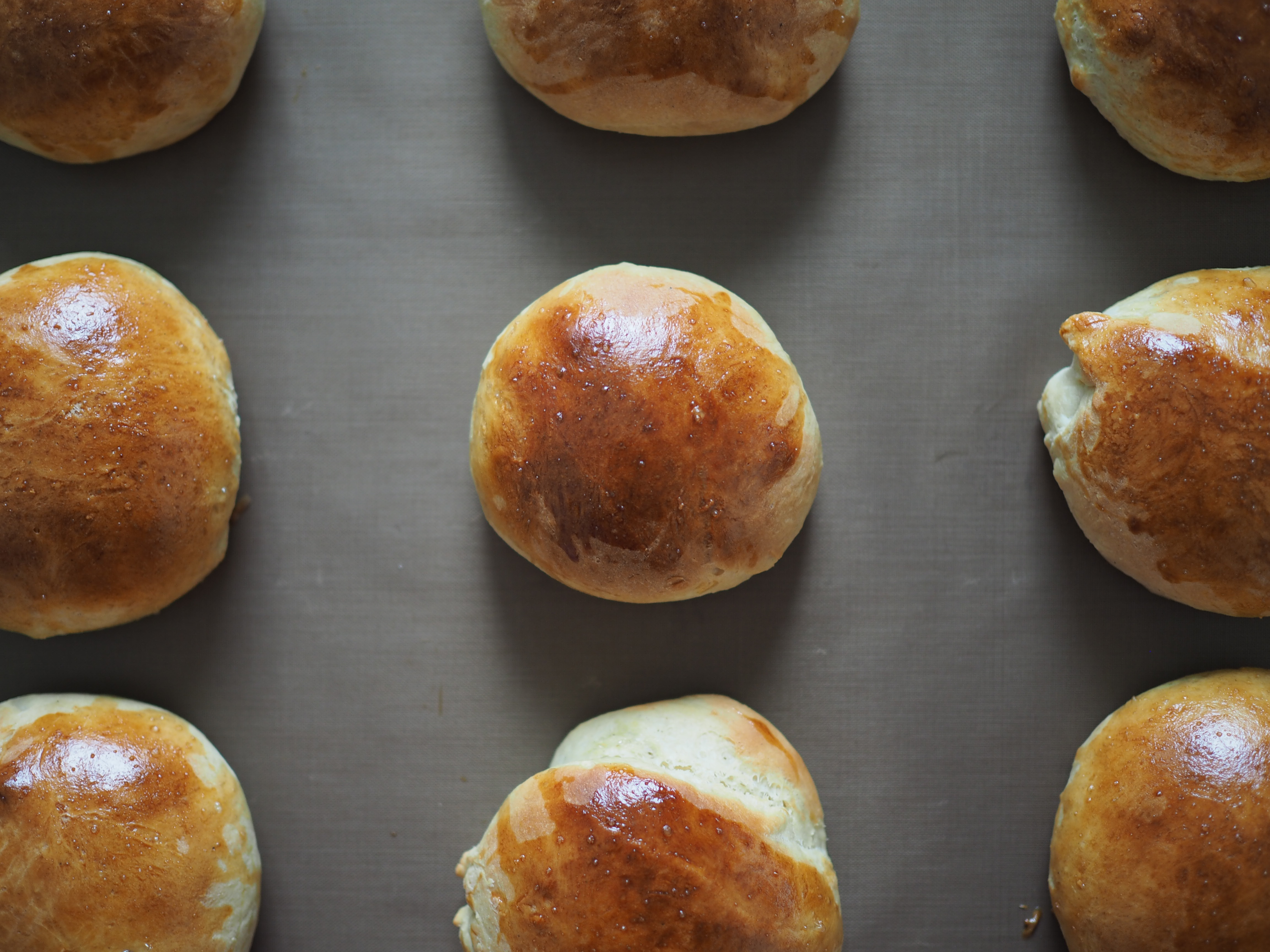
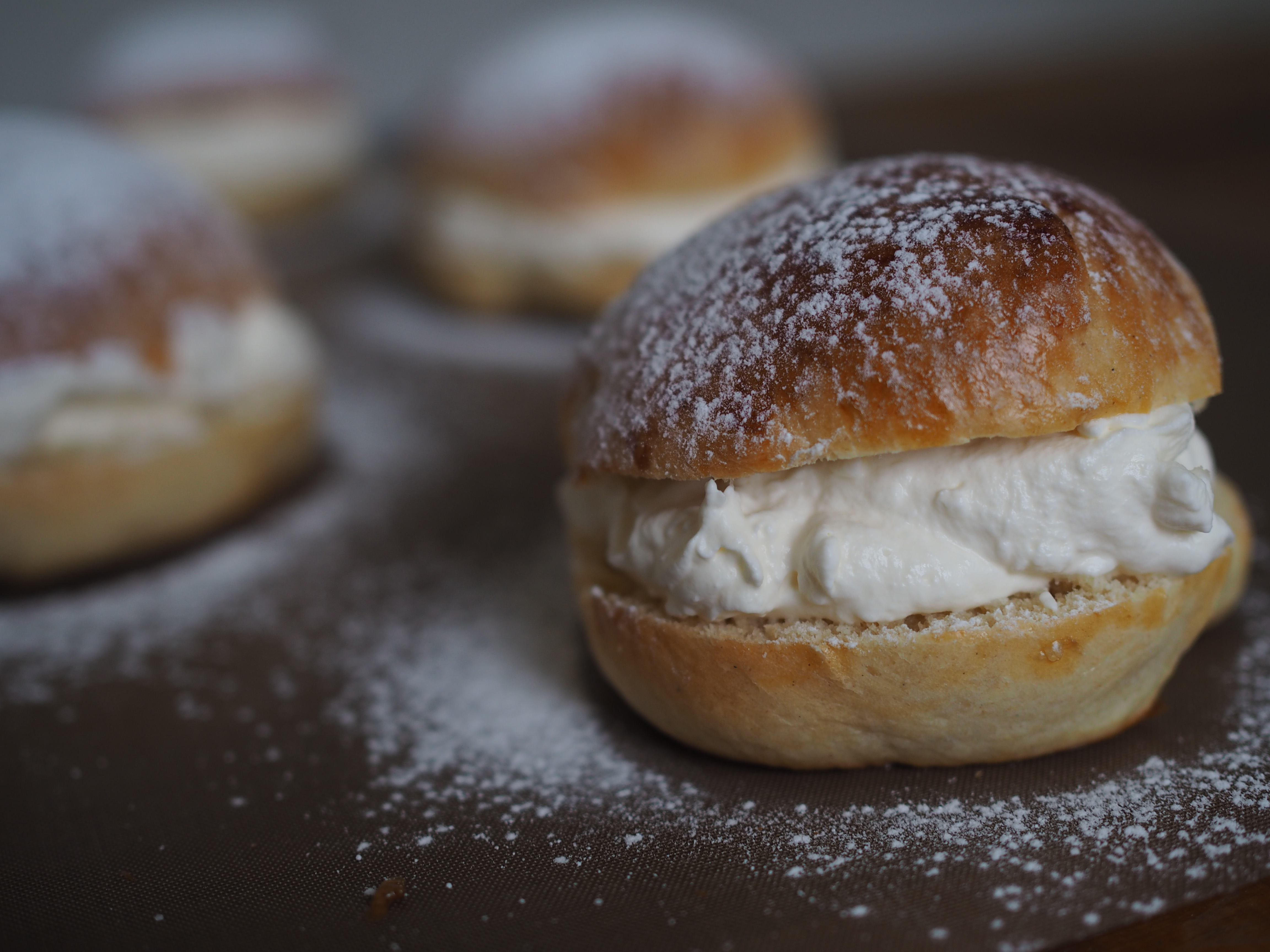
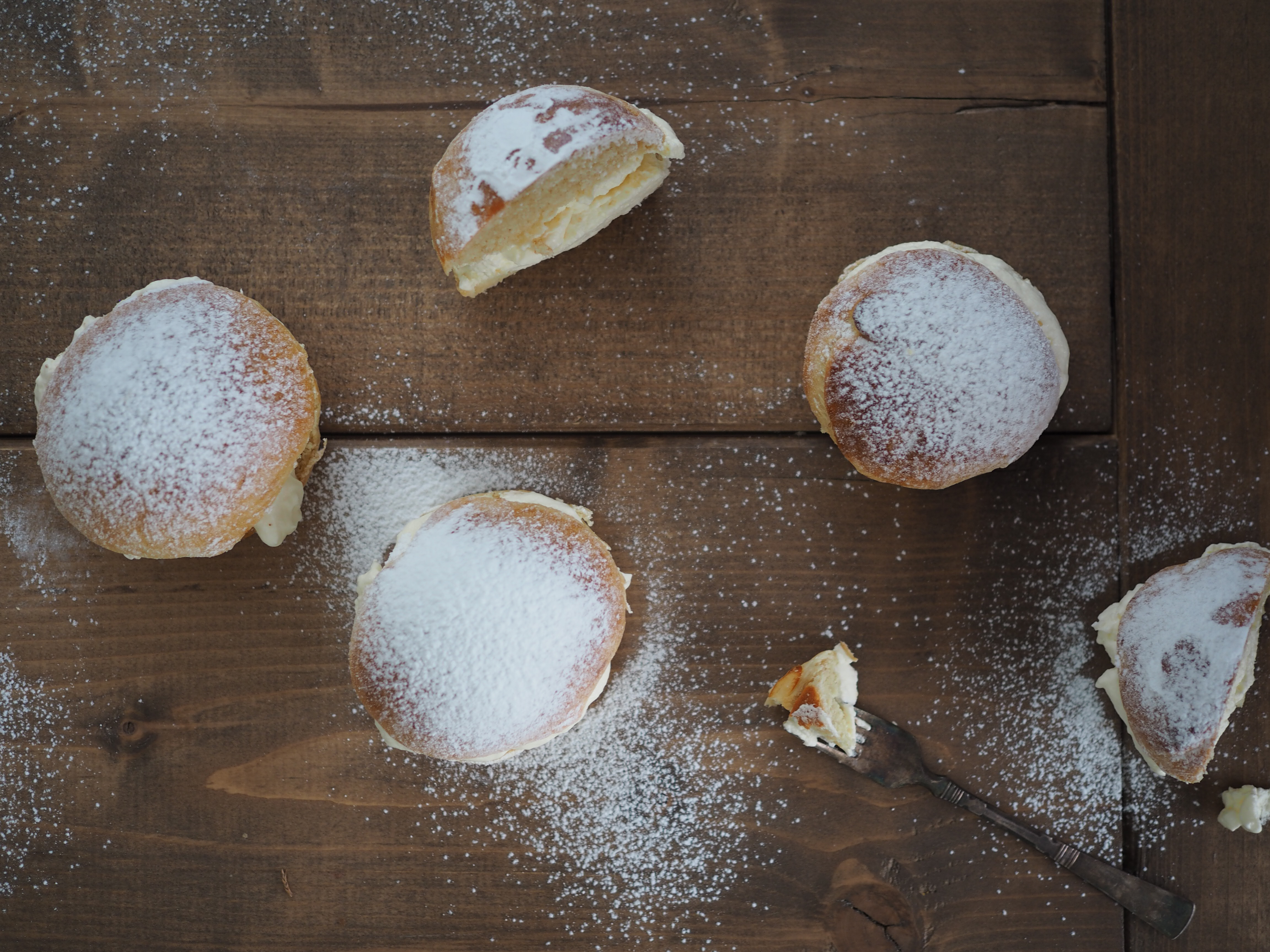
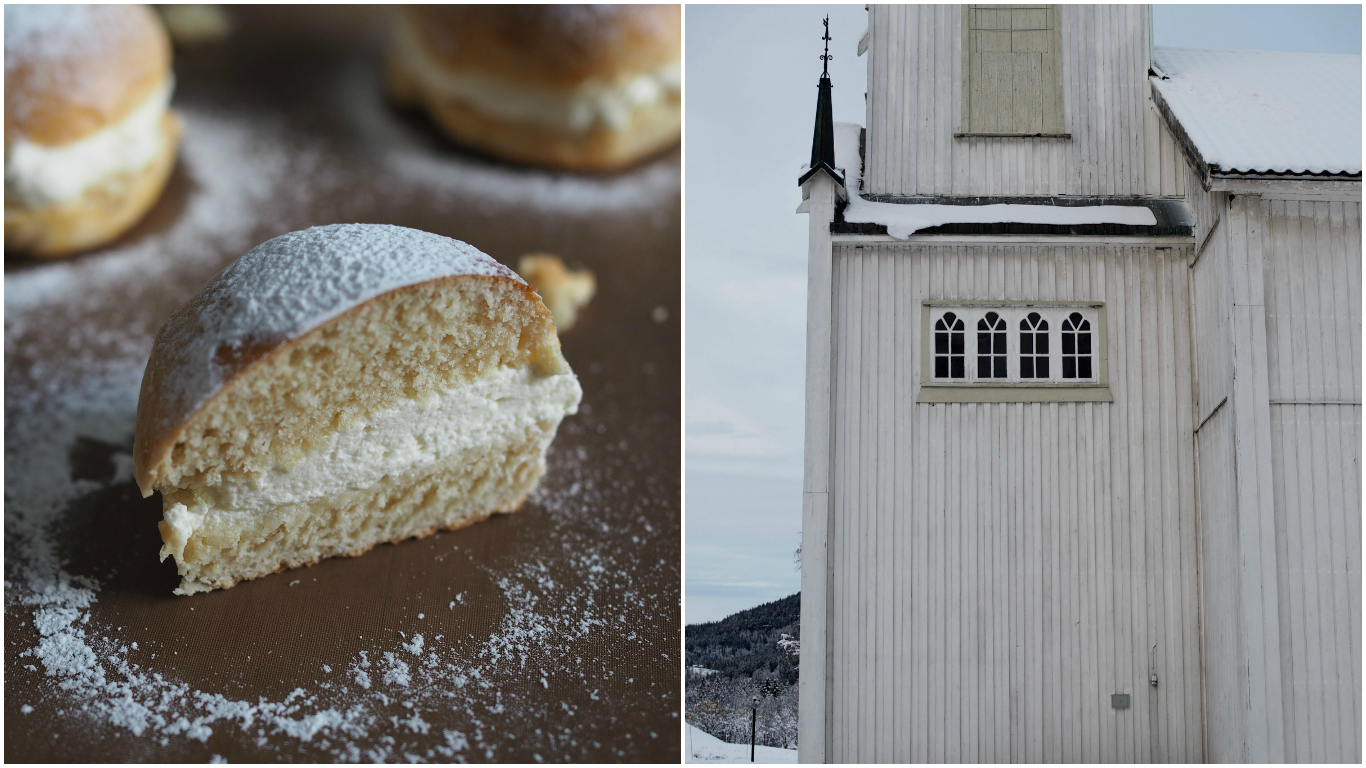
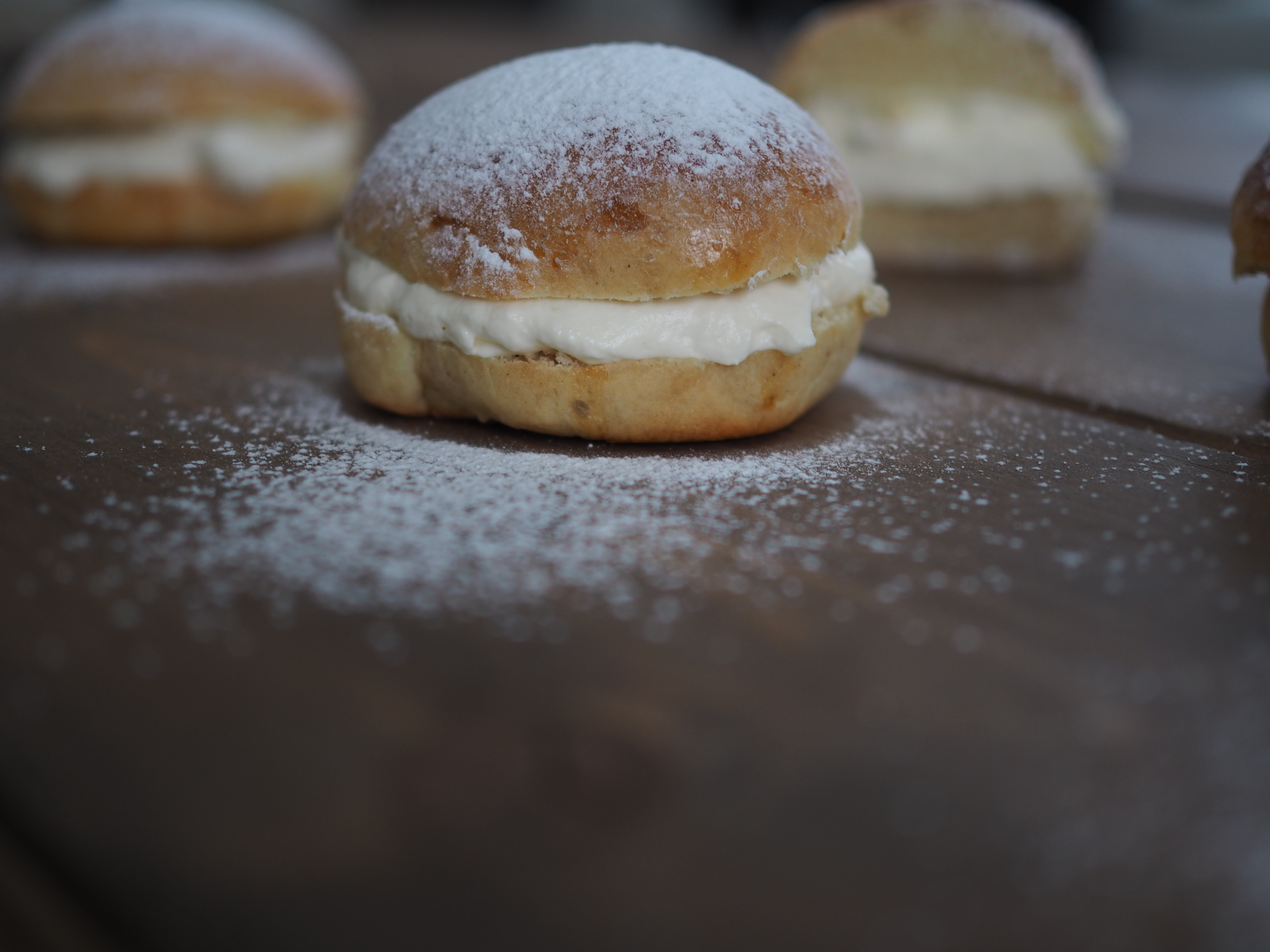
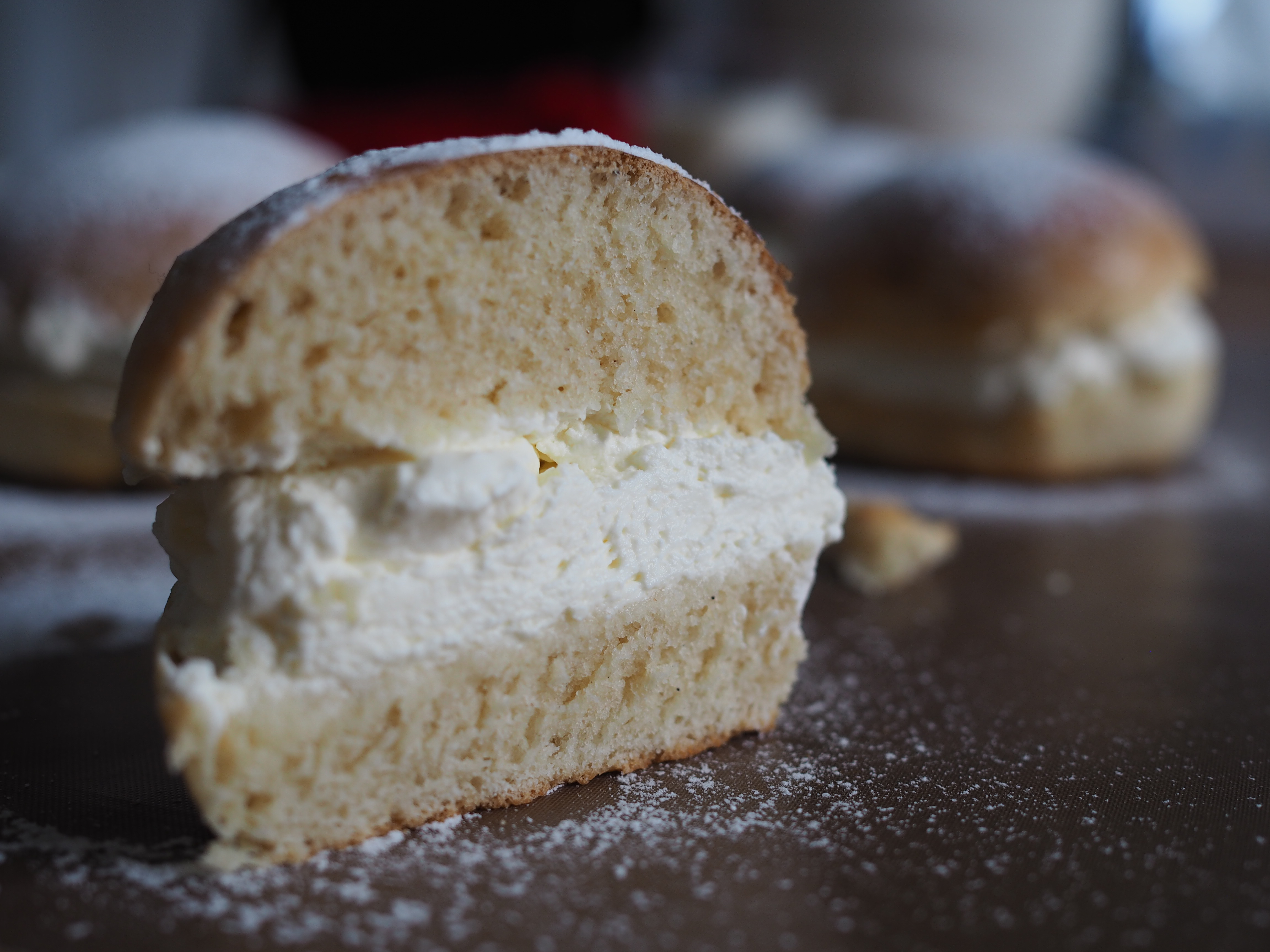

Fastelavnsboller
(Makes 18-20 buns)
Ingredients:
- 500 ml (2 cups plus 1 tablespoon) milk
- 850 g (7 cups plus 1 tablespoon) all-purpose flour
- 150 g (2/3 cup) butter, melted
- 150 g (3/4 cup) sugar
- 50 g (2 oz) fresh yeast or 17 g ( ½ ounce plus 1/8 oz) dry yeast
- 1 egg
- 1 teaspoon cardamom
- 1/2 teaspoon salt
- 1 egg for brushing
- Hand whipped cream (5 dl or 2 cups whipping cream, adding sugar to taste)
Preheat the oven to 200°C / 400°F.
Warm the milk in a small saucepan over medium-low heat, until lukewarm. Pour into a mixing bowl and combine with the melted butter. Add in the yeast, sugar, egg, cardamom and salt and mix well. Slowly add the flour and mix with a wooden spoon. Start with 800 g (about 6 1/2 cups) of flour, adding more as necessary to create a soft and workable dough.
Turn the dough out onto a floured surface and kneed until elastic. Place in a greased bowl, cover with a cloth and let the dough rise until doubled, 45 minutes.
Kneed the dough lightly on the floured surface and divide into 18-20 portions, rolling into smooth balls. Prepare two baking sheets and divide the buns on the prepared sheets. Cover loosely with plastic or a cloth, and let rise until doubled, about 45 minutes.
Beat the egg with a fork and add 1 teapsoon water. Brush the buns with the egg wash.
Bake in the middle of the oven, 1 sheet at a time, for 15 minutes. Transfer to a wire rack to cool.
Once the buns are cooled, slice them in half, horizontally, and cover the bottom of the bun with whipped cream (and jam if you like). Replace the top and sprinkle generously with powdered sugar.
∗Sources: Store Norske Leksikon; Aktiv i Oslo; Hverdagskost of Festmat Langs Primstaven. Birger & Brimi. 2001.
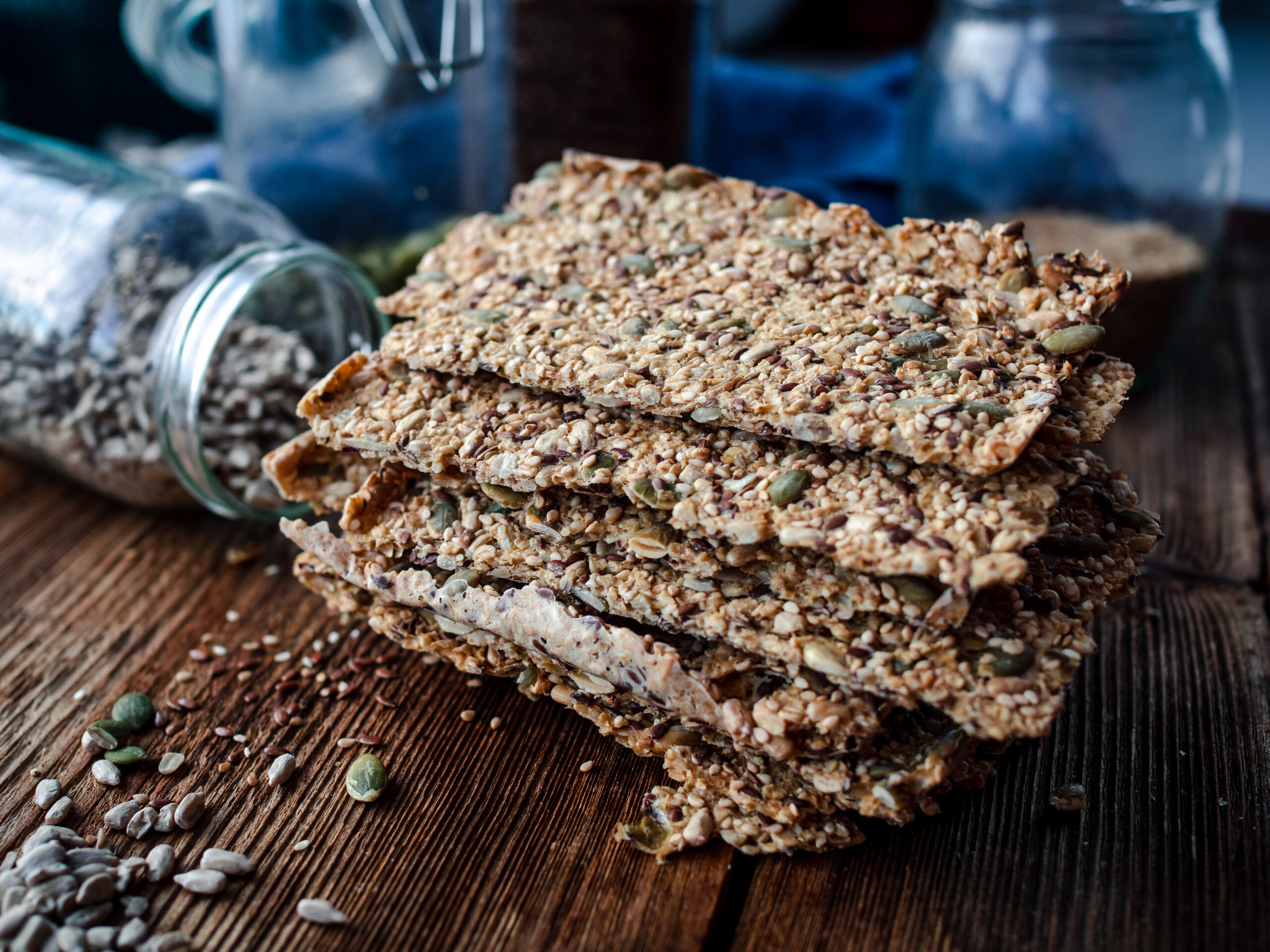
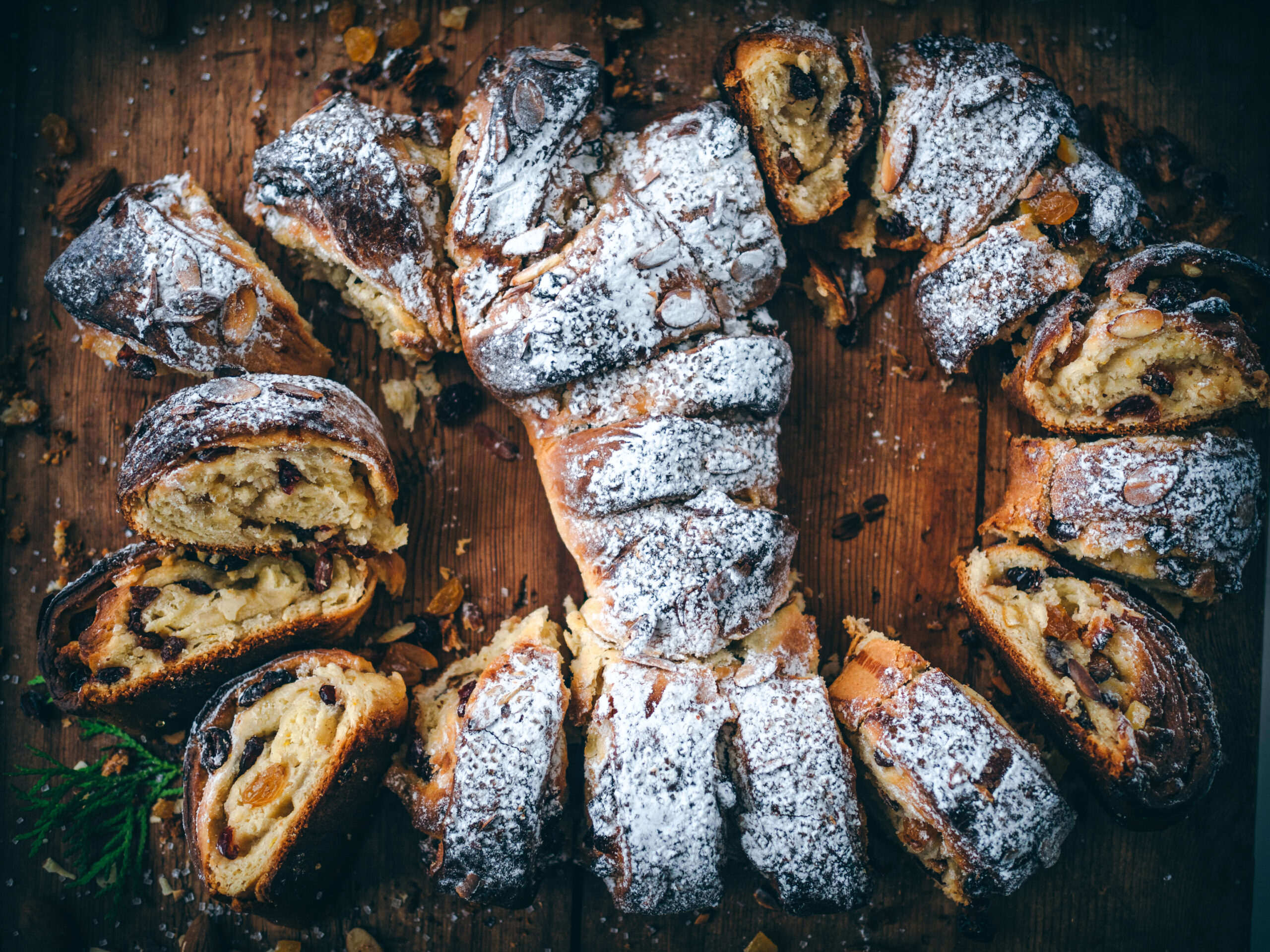
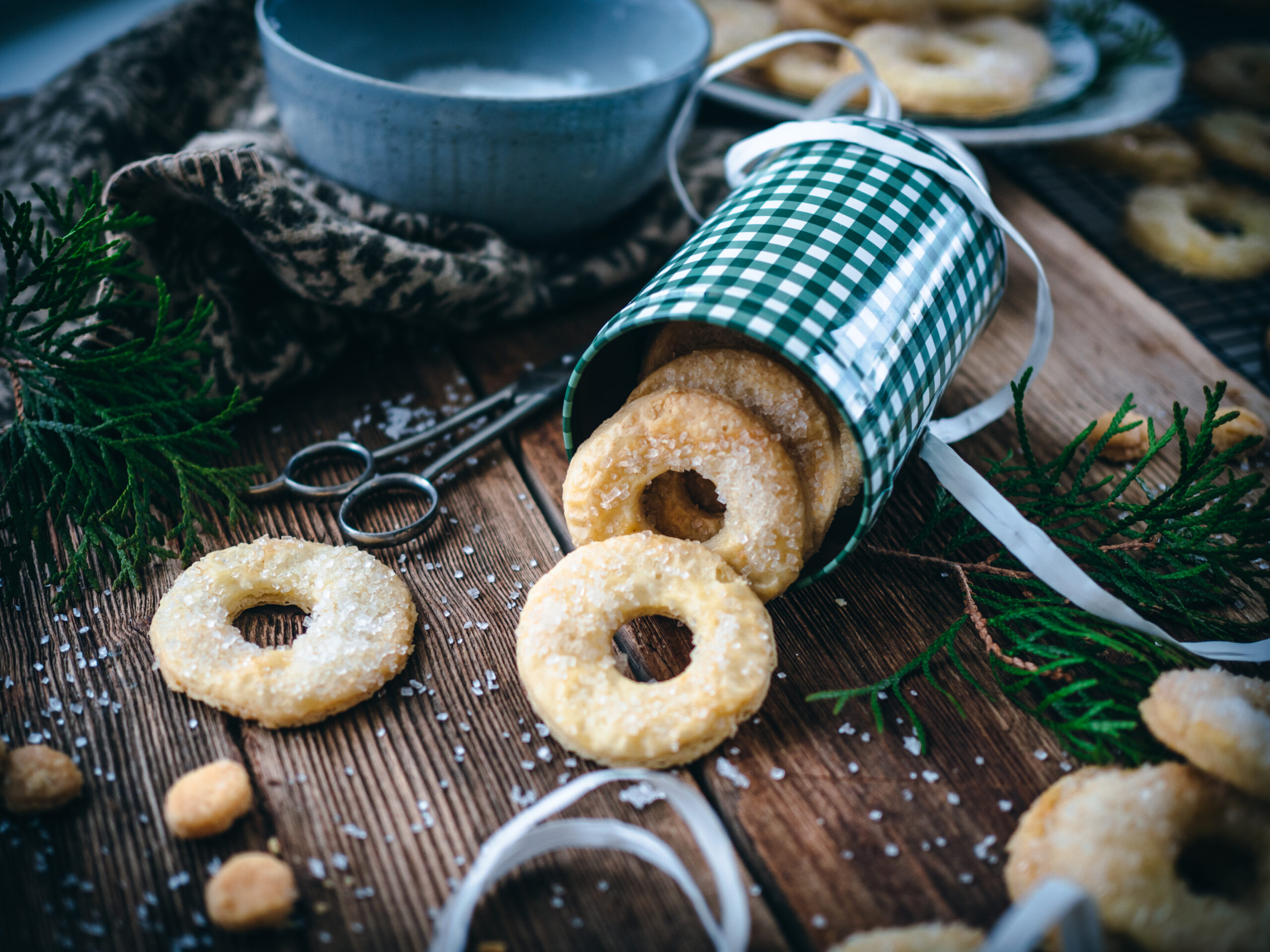
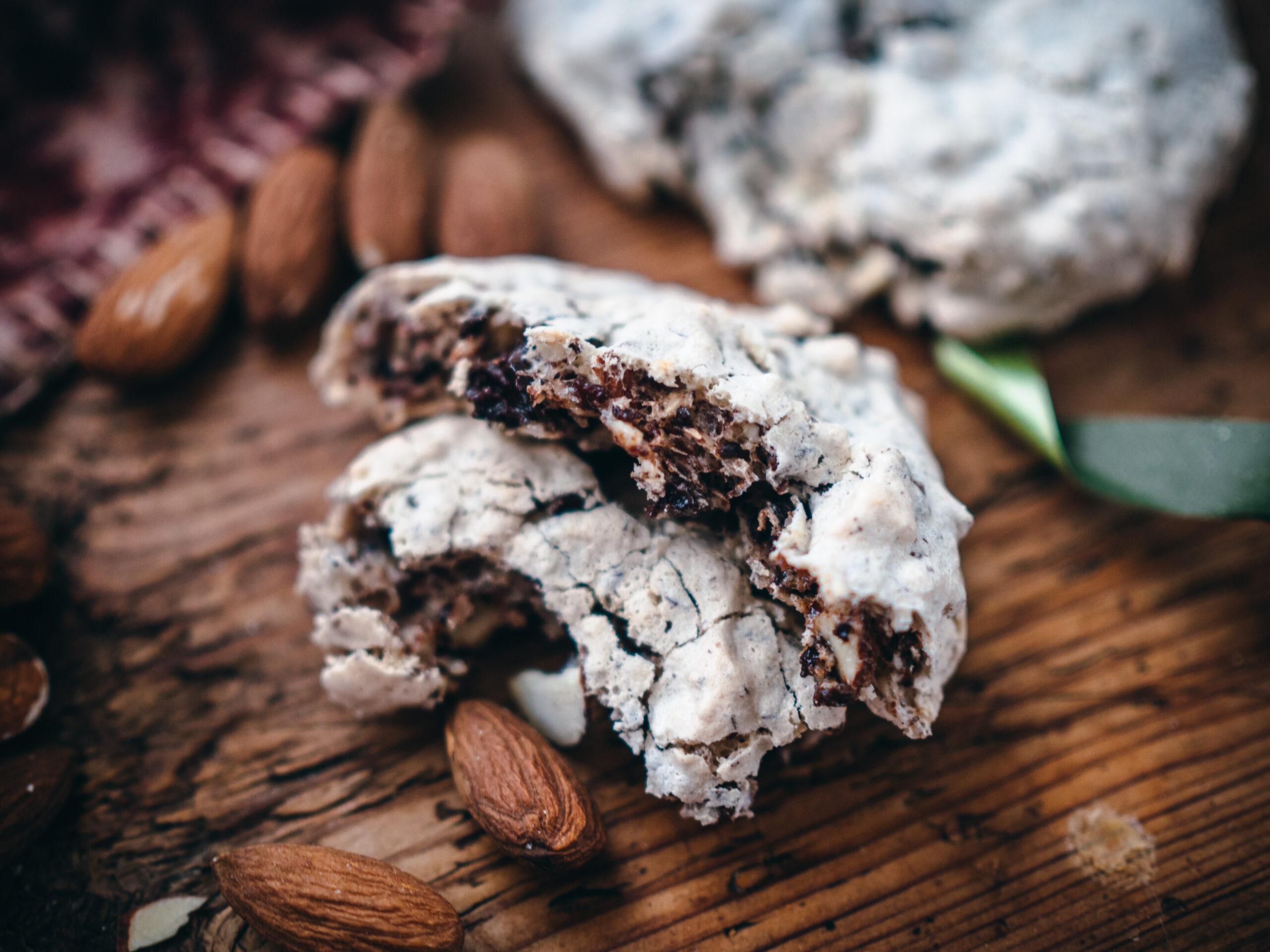
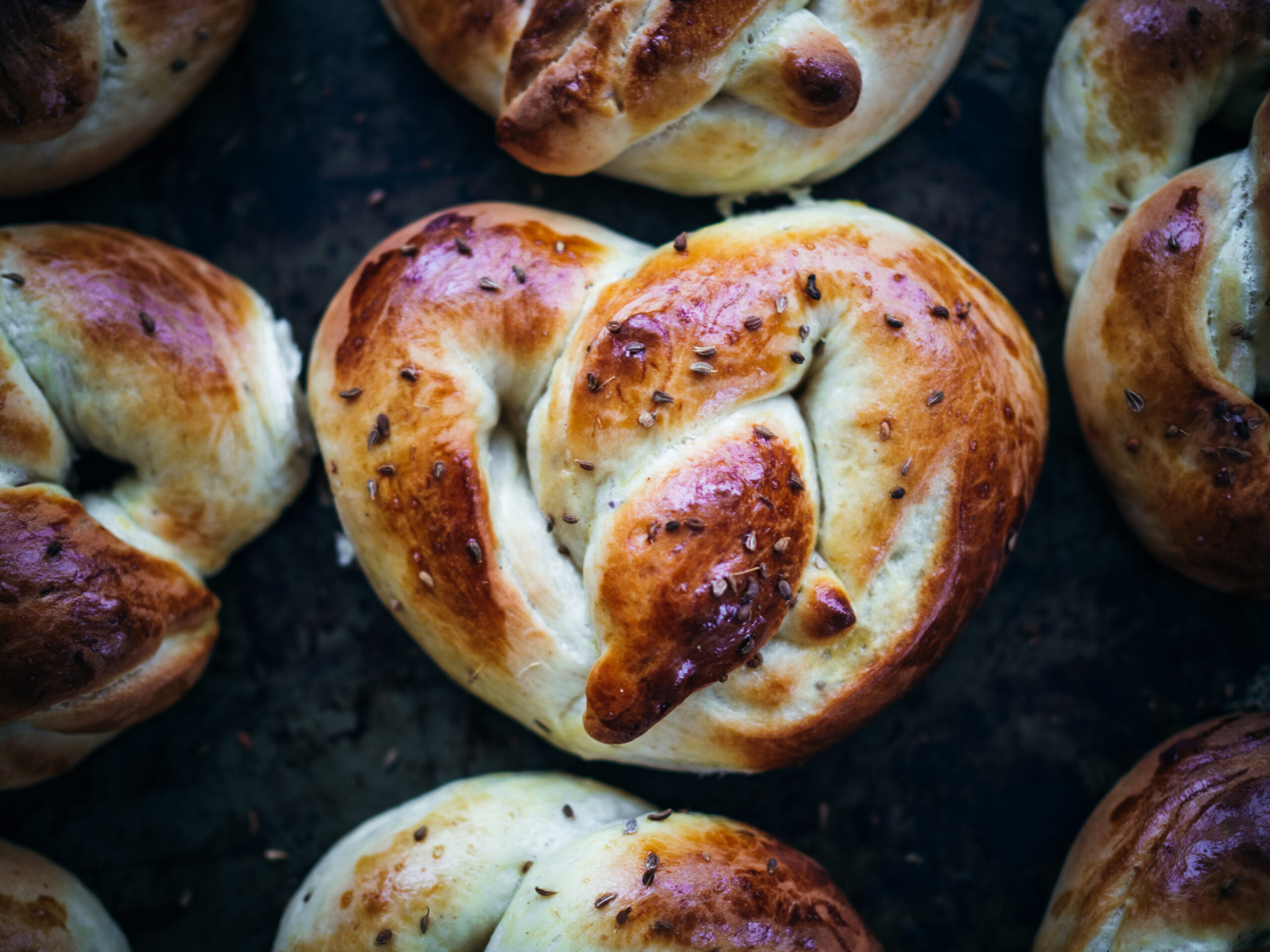
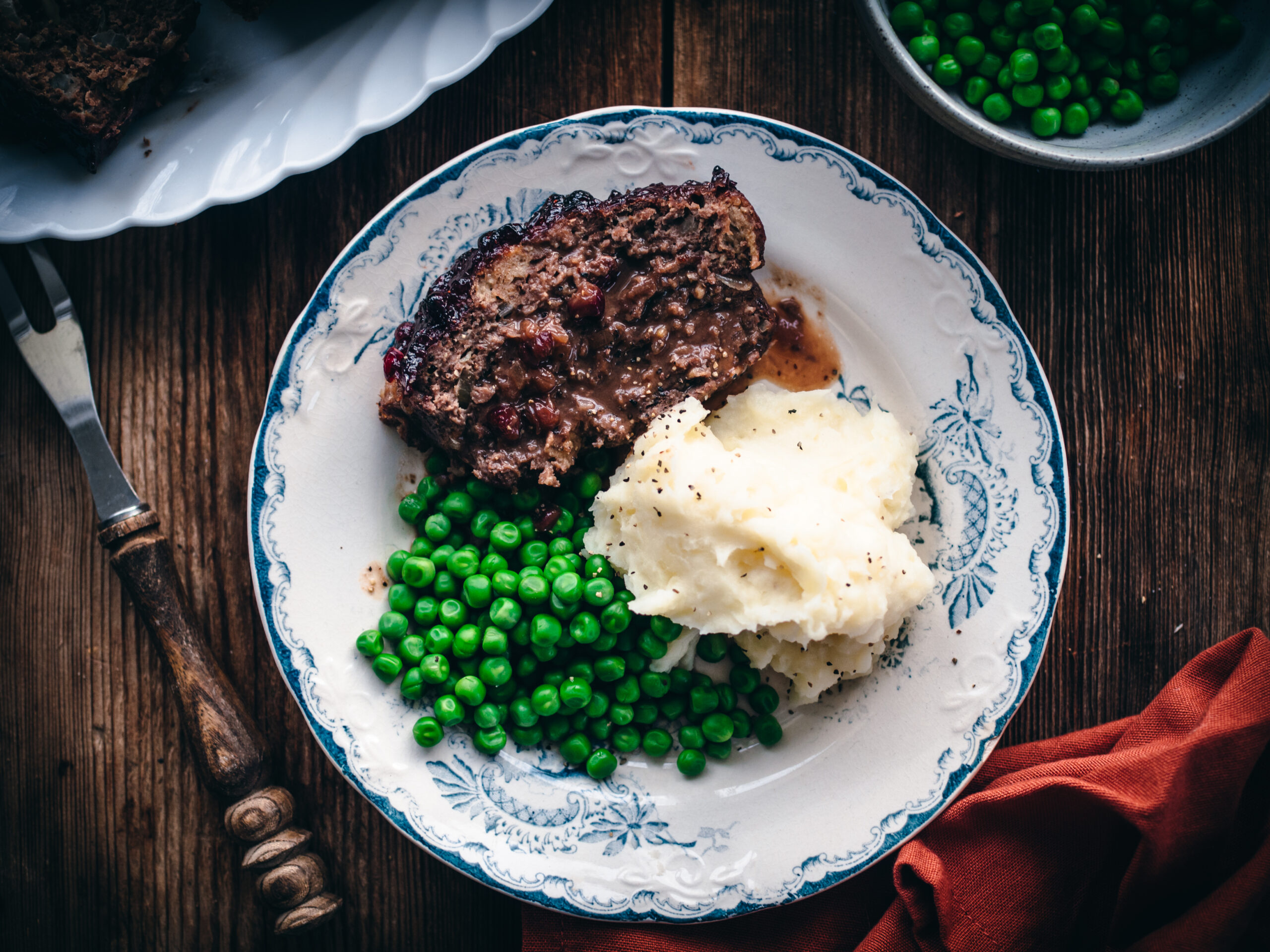
[…] fare for Fastelavns in Norway is a sweet bun with a layer of whipped cream in the middle called Fastelavnsboller (you can find my recipe and the history here). You will also find different names and slightly […]
I grew up with two traditions, this one from Norway (my Mother was Norwegian) and Pancakes for my Scottish/English Father. Either way, we used a great deal of oil and sugar on Shrove Tuesday.
Wonderful! I was looking for an article to explain my American family and friends what a fastelavesbolle is, and found this! I am Norwegian, living in Bergen, Norway – and married to an American who moved here 🙂
Ps, we almost always have jam on the fastelavesnbolle – I have honestly never heard of serving them with cream only .
So happy you found this article as well! It’s not always easy explaining certain dishes and traditions across cultures 🙂
Thank you for sharing this fascinating tradition and delicious recipe!
Thanks, Dixie!